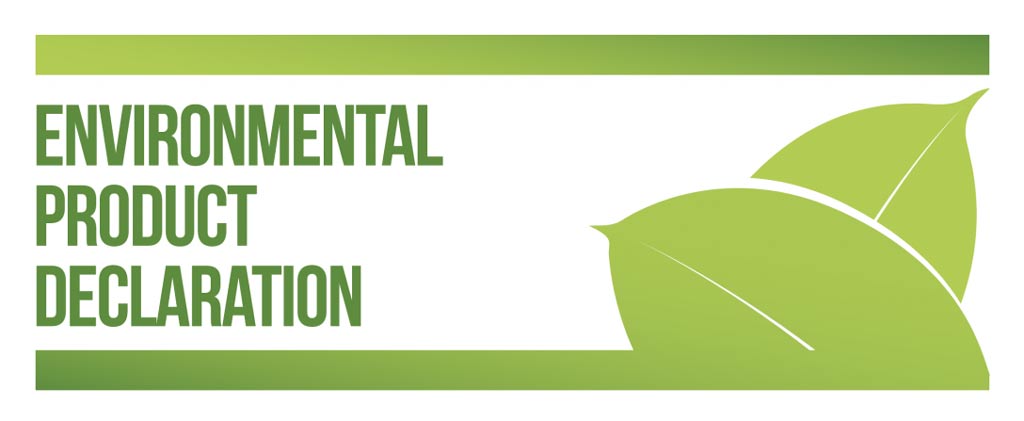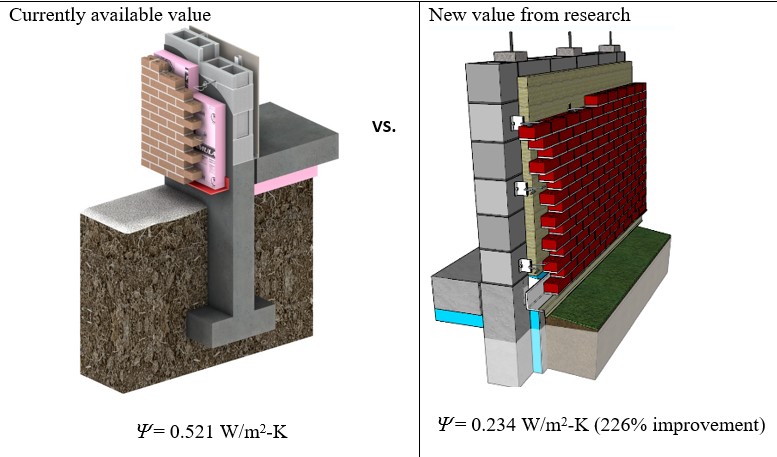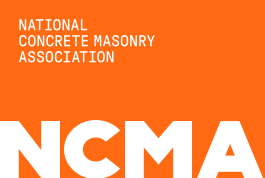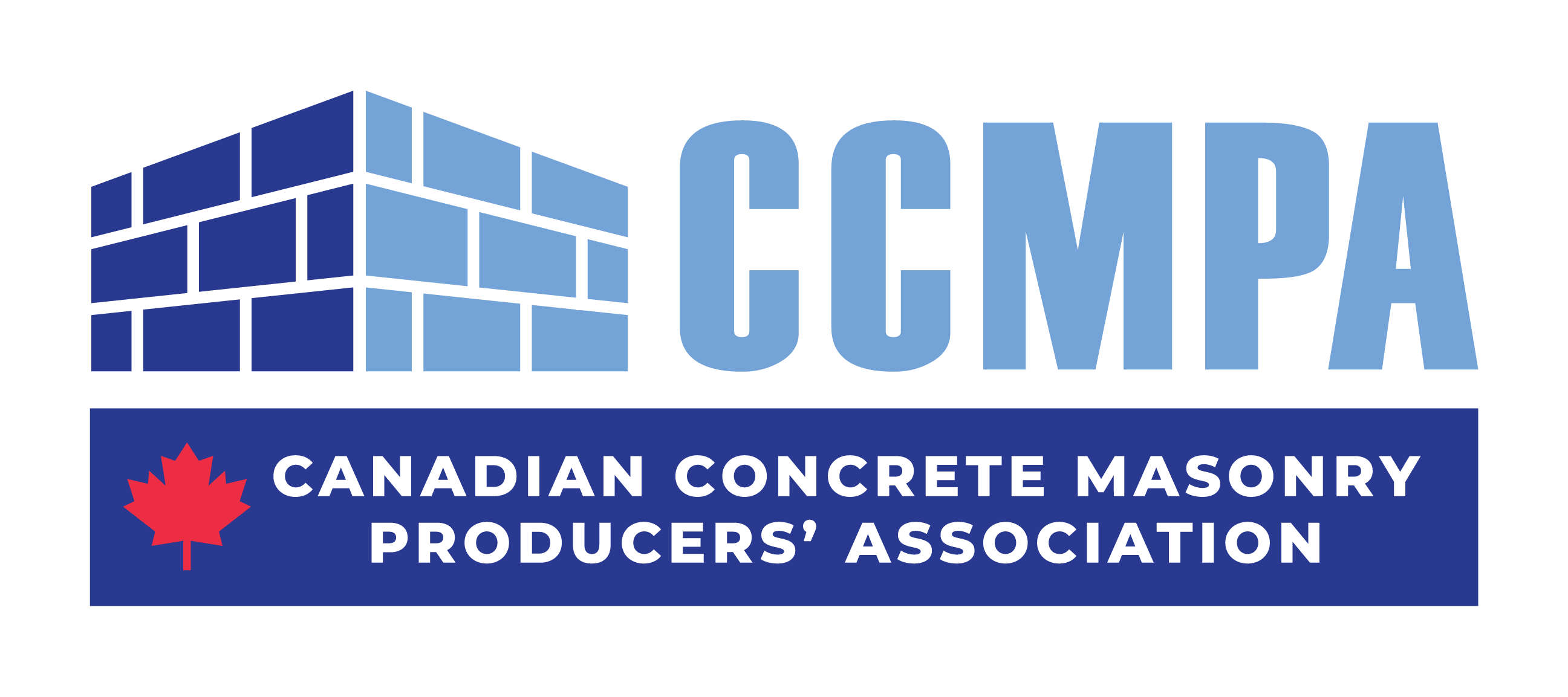Your Q1 CCMPA Activity Report

CCMPA Members and Friends
We hope that this email finds you healthy and well, surviving despite the continued chaos surrounding us. The silver lining of this pandemic seems to be that it has been an outstanding couple of years for block production and sales – with a continued strong forecast for 2022. At CCMPA we have used this past year to undertake several large projects, including: – Initial Cost of Building Study – Comparative Cost of Insurance Study– Building for Life Strategic Group– Industry Wide EPD RenewalFor 2022, the focus will be on consolidating this research and translating it out to our target markets in the design community. In this edition: First Edition: Codes QuarterlyWhat is the big deal about an EPD?Masonry Masters Interview: Adrien Sparling Student Research Updates (CMDC / CCMPA)Bridging the Thermal Gap: Mark Hagel, AMCGR Municipal Planning Update – Andrew Payne, MasonryworksNCMA/ICPI Unification & Success for CheckoffBuilding For Life – The Concrete Alliance Keep healthy & well,Marcus, Justin & AndreaAs always, we welcome questions / feedback / future topic suggestions at Info@CCMPA.ca

In 2021, feedback gathered from our membership requested more in-depth communication from the CCMPA on all things Codes & Standards. We heard you, we’re listening & we’re acting! Click below to access the first edition of “Codes Quarterly” which will update you on the latest and greatest developments. These updates will be housed at CCMPA.ca and you can access them anytime. If there is anything specific you would like to see featured, please send your request to Info@CCMPA.ca

What is the big deal about having an Environmental Product Declaration (EPD)? “There are so many reasons that having EPDs are important. As a concrete product manufacturers, one of the biggest reasons to have EPDs is to let designers know we are taking environmental concerns seriously, and in particular embodied carbon. Another big reason is to take inventory of our environmental impacts so that we can improve. We can’t change what we don’t measure.” ~ Heidi Jandris, Jandris Block. CCMPA is currently in the process of renewing our industry-wide Environmental Product Declaration with the Athena Consulting Group, which will include standard, lightweight and architectural block with GU & GUL cement. This new EPD will work to quantify the reduction of Carbon in CMU because the majority of block production in Canada now utilizes GUL cement. Additionally – we were able to capitalize on a grant from the NRC and offset upwards of $30K in cost for the EPD process.All members that that participated in the EPD process will be included on the document, and as always the finalized EPD will be available online at CCMPA.ca

It's official!
CCMPA has our own Youtube channel!
A Youtube channel is a place where we can house all of our videos and various marketing tools so that they can be easily accessed by the public. This allows us to “share” within our networks, as well as with other target audiences such as the design / architectural communities and let them know about the great work we are doing.
Our first video is an interview with Adrien Sparling, PhD candidate, and we are proud to say that he is the newest member of the CMDC team! Click the link below to watch the video interview about his research (Feel free to share the link with your network too!)
CCMPA & CMDC Masonry Research Activities
2022 YTD Highlights
- Our Mitacs internship grant was successfully approved with University of Waterloo entitled “Advanced Masonry Training System: Learning from Experts with Augmented Reality and Motion Capture Systems” A longer-term NSERC Alliance grant is being drafted and will be submitted this year as well to continue our research in the areas related to apprenticeship training, ergonomics, injury prevention, and productivity as it relates to laying concrete masonry units.
- University of Alberta was able to test an 8.75 m tall concrete block out subjected to out-of-plane loading as a part of research program entitled “Resilient concrete masonry walls to meet the needs for the next generation of low-rise structures.” On a similar theme, York University has concluded its project looking at near surface reinforcement for slender masonry walls, which required testing of 7.9 m tall wall specimens. These results from these schools, and other ongoing work, are focused on improving our current design provisions for slender masonry walls.
- Testing at the Carleton University fire lab in Richmond, ON continued through 2021 with the set-up now fully operational. This research program, “Improving the Fire Endurance of Concrete Block Masonry Walls Towards Next-Generation Performance-Based Fire Standards” has explored the effects that block geometry and fill materials have on the thermal properties and fire rating of concrete block assemblies.
Bridging the Gap:
The Thermal Bridging Gap That is!
By. Dr. Mark Hagel, AMC
Alberta Masonry Council (AMC), Manitoba Masonry Institute (MMI), Masonry Institute of British Columbia (MIBC) and Masonryworks are collaborating with the University of Alberta using an NSERC (National Science and Engineering Research Council) Alliance grant to address missing thermal bridging values and improve existing thermal bridging values for concrete block walls. To date the research has bridged the gap with thermal models at-grade that improve the currently available values for at-grade linear transitions with block walls (https://thermalenvelope.ca/catalogue/) by up to 226% by providing values which account for continuous insulation at grade (knife plates) and surface mounted brick ties.

Several other improvements have been found as well that when used in combination can result in using up to 2” (50 mm) less exterior insulation in a concrete block with brick veneer assembly to arrive at the same thermal performance in the wall. Using 2” less insulation translates to a savings of $1 to $3 a square foot depending on the type of insulation in the cost of insulation materials only. Reduction in the size of shelf angles needed at-grade and floor levels will also bring savings. Some of the thermal performance considerations that are not currently available include: the thermal impact of block sizes other than 20 cm units (the only size currently available), the use of vermiculite in the block cells, the use of light-weight concrete block units, at-grade transition on stand-offs (knife plates), and corner transitions. Look for the First edition of the Thermal Catalog in the Spring of 2022 that will give designers the values they need to more accurately model concrete block brick veneer walls. If you have any questions, reach out to Mark directly at markhagel@albertamasonrycouncil.ca or click the link below!


Municipal Government Relations Update
Andrew Payne, Executive DirectorMasonry Works continued government relations engagement throughout Ontario over the fall. Masonry Works looks forward to continuing this momentum forward into 2022 wherein the team plans to significantly increase engagements through a 100-meeting challenge (over double from 50 meetings in 2021).Since our last update the Masonry Works government relations team has been active in 21 municipalities through attending 24 meetings. At each of these meetings the GR team provided policy recommendations on a number of issues including matters of exterior design and using masonry as a resilient and sustainable material when conducting a life cycle analysis for new builds. Masonry Works was active in each of these municipalities since our last update:
- Welland
- Ottawa x2
- St. Catharines
- Stoffville-Whitchucrch x2
- Richmond Hill
- Barrie
- Simcoe County
- Aurora
- Grey County
- Elgin
- Strathroy
- Middlesex County
- St. Mary’s x2
- Greater Essex County District School Board
- Sault Ste. Marie
- Coburg
- Caledon
- Haldiman County (Cayuga)
- Windsor
- Ajax
- Greater Napanee
In November of 2021, Masonry Works released its comprehensive strategic plan which set forth the direction for the association over the next five years. A marquee goal of this plan is the 2022 Government Relations campaign which will look to support on the COVID recovery through increasing the associations presence at key stakeholder and political events. The plan for 2022 lays out a 100-meeting challenge for the year. Through this plan the GR team will effectively double the number of engagements in the campaign throughout the year. With the continued support from CCMPA the Masonry Works GR team looks forward to having its most impactful year to date. Any questions / comments / feedback can be sent to: Andrew@Masonryworks.ca


Unification & Checkoff Update
In December 2021, two things of great significance occurred for concrete product industry. First, members of the National Concrete Masonry Association (NCMA) and the Interlocking Concrete Pavement Institute (ICPI) voted to unify the two organizations into a single association. Second, concrete masonry manufacturers voted to approve the CMU Checkoff program. Both of these create a bright future full of opportunities. UnificationFor many years, NCMA and ICPI have worked together in many areas – codes and standards, hardscape installer workforce development, and many more. They both share a similar mission and vision to advance the market for concrete products, and they share many common members. Because of this, a dedicated group of individuals from both associations worked for nearly two years to develop a plan for what a unified association would look like. This plan detailed the governance structure, membership categories, operations, and more. It also provided the vision for how a single, unified organization can be more influential and better positioned to advance member interests.This plan was approved by the boards of both NCMA and ICPI, and presented to the memberships. Ultimately, both groups voted to approve unification by wide majorities. While the decision has been made, there is still much work to do. Members and staff are working hard to implement this transition. The new association will officially be operating as of July 1, 2022, under the transitional name ‘ICPI-NCMA’. In the coming months, much more information will be available on the transition. In the meantime, you can review the unification plan at www.icpi-ncma-unification.com.Specific to Canadian members, the unified association will continue the strong collaboration with CCMPA related to promoting concrete masonry, as well as build on success in hardscape markets for Canada. Members of CCMPA will continue to be members of the unified association. Additional details on how membership will transition to the new association will likely be available in March or April. CMU CheckoffApproval of this program has been more than 10 years in the making. Inspiration for this effort came from the success of the Canadian Environmental Levy program, which demonstrates the effectiveness of programs that have broad industry support and funding. The CMU Checkoff program, which is administered through the US Department of Commerce, provides US concrete block producers the ability generate needed resources for education, research, and promotion. All block producers in the US will be assessed $0.01 for each block sold, which will be placed into a fund controlled by the CMU Checkoff Board – a new organization that is being established now and whose members will be appointed by the US Secretary of Commerce.This was a significant effort from US block producers. First the program had to be authorized through a bill passed by the US Congress, and then the Department of Commerce had to finalize the details in an Order, which the block producers had to approve in an industry referendum. With an affirmative industry vote, the program is considered established. It is estimated this program will bring in $10 million or more annually to research, promote, and provide education on concrete masonry units and systems. Assessments are projected to begin late in 2022 and program funding beginning sometime in 2023. ImpactBoth of these things will have significant positive impact for the manufactured concrete products industry. “We have long recognized the need for more investment in the future of our industry,” said Bob Thomas, NCMA President. “The CMU Checkoff program will generate those funds for our concrete masonry market segment to grow and gain back market share.”“Through unification of ICPI and NCMA, the concrete masonry and hardscape industry will have a stronger, more unified voice in advocacy and promotion,” says Thomas, who has been tapped to lead the ICPI-NCMA as its CEO. “The new association will find efficiencies in operations, develop stronger programs relying on the collective strengths or our combined staff, and speak with a unified voice to architects, designers, homeowners and more. All in all, this is a very exciting time for the industry.”Questions or comments can be sent to: Nick Lang at nlang@ncma.org
Building For Life: The Concrete Alliance
Cement and Concrete allies continue to meet on a quarterly basis to explore opportunities to use their collective voice to advance key, common priorities among partners. Coordinated and consistent messaging will ensure an increased profile at Queen’s Park with both elected and Ministry officials. Together we have developed a common carbon messaging document to highlight the actions we as an industry are taking to reduce our carbon footprint. The public document emphasizes our development of an Industry Ambition Statement with 2030 and 2050 targets, and a supporting net-zero roadmap, to be released in the first half of 2022. Our group has developed a public document to highlight who we are, our economic and jobs impact, and the inherent benefits of using concrete for many applications. This document can be used with governments, architects, engineers, and civil society to highlight the opportunities for building a health, safe, resilient and prosperous Ontario. This document can be found here in both English and French: https://ccmpa.ca/2021/12/industry-climate-ambition-statement/ With the upcoming election on June 2nd, we are reaching out to meet with all parties to highlight our asks around sustained infrastructure investment and offer our assistance with developing policy. To date we have met with both the Liberals and the Conservatives and hope to schedule meetings shortly with the Green Party and the NDP. Our aim is to be viewed as a partner with government and ensure that policies and regulations do not negatively impact the aggregate, cement or concrete industry. Some key ‘wins’ over the past year include:
- A regulation change with the Ministry of the Environment, Conservation and Parks that will facilitate the use of low-carbon fuels in cement kilns. We have been advocating for this change for over 10 years. Taking a partnership approach were able to achieve this key initiative and the new regulation came into effect on January 1, 2022.
- A seat on the WSIB Chair’s Construction Industry Advisory Committee. Through participation on this committee we have the opportunity to raise health and safety issues faced by the industry. This committee meets four times per year.
Focusing on the key Ministries of Natural Resources, Labour, Transportation, Infrastructure and Environment, we look forward to working together in 2022 to ensure that aggregates, cement and concrete remain top of mind for government.

Written by:



